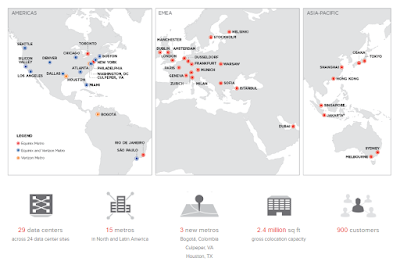CenturyLink, which announced in October 2016 an agreement to acquire Level 3 Communications for approximately $34 billion, has announced the senior leadership team that will report to CEO and president Glen F. Post III, effective as of the closing of its pending acquisition of Level 3 Communications.
The senior leadership team following the acquisition of Level 3 will include:
1. Clay Bailey, SVP, transformation, who will lead the integration of CenturyLink and Level 3, and be responsible for automation and simplification in the combined company.
2. Aamir Hussain, EVP, CTO and network operations, with responsibility for product development, platforms and infrastructure and information technology.
3. Sunit Patel, Level 3 EVP and CFO, will as previously announced serve as EVP, CFO, responsible for domestic and international finance and accounting functions.
4. Dean Douglas, EVP, North America enterprise, who will be responsible for sales, revenue generation and enterprise service delivery in North American markets, as well as the company's national/business technicians.
5. Maxine Moreau, EVP, consumer, who will be responsible for sales, marketing and service delivery for local market consumer operations in 37 states, including field technicians.
6. Girish Varma, EVP, IT and managed services, with responsibility for technology/strategic consulting, big data, managed security services and managed hosting.
7. Laurinda Pang, EVP, global accounts management and international, with responsibility for sales, revenue generation and enterprise service delivery for major global accounts and for the APAC, EMEA and LATAM markets.
8. Gary Gauba, SVP, chief relationship officer, with responsibility for building relationships with the C-suite executives of the company's top customers and continuing to lead the advanced solutions group.
CenturyLink announced in late October 2016 an agreement to acquire Level 3 for approximately $34 billion in cash and stock, and has subsequently announced that shareholders of both companies, as well as several states, have approved or cleared the transaction. The transaction is currently expected to close by the end of the third quarter 2017.
Under terms of the agreement, Level 3 shareholders are to receive $26.50 per share in cash and a fixed exchange ratio of 1.4286 shares of CenturyLink stock for each Level 3 share held, equating to a price of $66.50 per Level 3 share. On closing, CenturyLink shareholders will own approximately 51% and Level 3 shareholders approximately 49% of the combined company. The combined company will be based in Monroe, Louisiana and maintain a significant presence in Colorado and Denver.
The deal will combine CenturyLink's enterprise customer base with Level 3's global network footprint, and is intended to result in further investment in the reach and speeds of broadband infrastructure for both small businesses and consumers. Specifically, the combination will extend CenturyLink's network by around 200,000 route miles of fibre, including 64,000 route miles in 350 metro areas and 33,000 subsea route miles.
 M-CORD takes the best ideas from the pivotal Central Office Re-architected as a Datacenter (CORD) and adapts them for next generation mobile networks. CORD combines NFV, SDN, and the elasticity of commodity clouds and M-CORD adds the latest innovations in mobility, including for the radio access network (RAN), core, and services.
M-CORD takes the best ideas from the pivotal Central Office Re-architected as a Datacenter (CORD) and adapts them for next generation mobile networks. CORD combines NFV, SDN, and the elasticity of commodity clouds and M-CORD adds the latest innovations in mobility, including for the radio access network (RAN), core, and services.




















